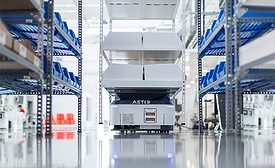Articles by Wayne Labs
Packaging: Health & environment
Two companies formed a joint effort to create an open source chemical replacement for PFAS in food packaging carry-out containers and the like
Read More
Software
Managing and Surviving Software Updates
Surviving a firmware, application software or a Windows update can at times seem impossible…
August 13, 2021
Mergers & Acquisitions
Cargill, Continental Grain to acquire Sanderson Farms
Cargill and Continental Grain have formed a joint venture to acquire Sanderson to create a leading U.S. poultry company
August 9, 2021
Spiral freezers
Spiral freezer provides quality ice cream maker efficient, environmentally friendly operation
Based on carbon dioxide refrigerant, the freezer is not only friendly to the environment but also safe to use, providing consistent product freezing
August 5, 2021
Robotics acquisition
ABB expands robotics line to include autonomous mobile robots with acquisition
ABB will purchase ASTI Mobile Robotics, completing the deal by mid-summer
July 20, 2021
Managing construction projects
Capital project management for those lacking on-staff expertise
While some food companies have people who can manage automation and construction projects, processors can also outsource CPM specialists
July 20, 2021
Automation updates
System integrators and hardware suppliers look at the mechanics of controls updates
Getting tested updates safely to processors and installed without a hitch requires flexibility and expertise from suppliers
July 14, 2021
Engineering R&D
Shear technology uses homogenization and ultrahigh pressure to improve quality, kill bacteria
Liquid food processors can cut out the chemicals and produce long-term, stable clean-label products
June 25, 2021
Pollution control
Novel method to provide nitrogen to plants without nitrate pollution
What if corn and wheat could create most of their own nitrogen like soy and peas?
June 24, 2021
Elevate your expertise in food engineering with unparalleled insights and connections.
Get the latest industry updates tailored your way.
JOIN TODAY!Copyright ©2024. All Rights Reserved BNP Media.
Design, CMS, Hosting & Web Development :: ePublishing










